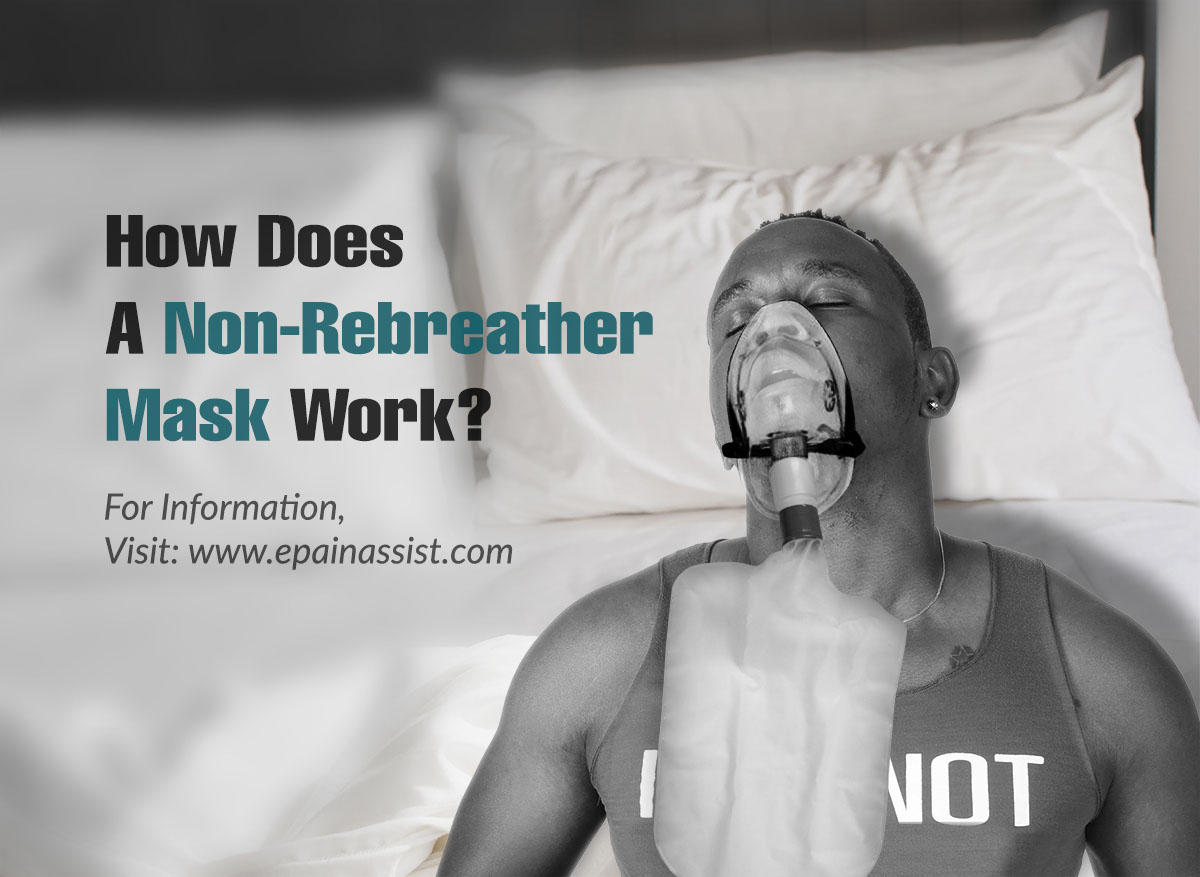What is a Non-Rebreather Mask?
A non-breather mask is a medical device that is used in emergencies to deliver oxygen. It consists of a reservoir bag that is filled with a high concentration of oxygen and a face mask connected to the bag. The reservoir bag is also connected with an oxygen tank.
It is attached around the patient’s head using an elastic band and covers the mouth and the nose. It has a one-way valve that prevents the exhaled air from re-entering the oxygen reservoir.
Hypoxemia is a condition that disrupts the lung’s ability to uptake oxygen. It can also affect the heart’s ability to pump blood that can lead to low oxygen levels. A non-rebreather mask is used to prevent hypoxia. It can also be used after a traumatic injury, smoke inhalation, and carbon monoxide poisoning to normalize the blood oxygen level.

How Does A Non-Rebreather Mask Work?
A non-rebreather mask is fitted to the nose and the mouth and is attached with an elastic band around the head.
As the patient inhales, he/she breathes in oxygen from the reservoir bag. During exhalation, the air escapes out through the vent in the side of the mask into the atmosphere.
A non-rebreather mask helps take in a higher concentration of oxygen than a standard oxygen mask.
They are only used in emergency conditions as they come with several risks. Disruption in the airflow can lead to suffocation that can potentially choke if a patient while wearing a mask is sedated and he vomits.
It is important that a healthcare provider is in attendance while the patient is wearing this mask.
How Is Partial Rebreather Different From Non-Rebreather?
A non-rebreather delivers about 60 percent to 80 percent oxygen at a rate of 10-15 liters/minute.(1) They quickly deliver oxygen and are used in situations where the person has a very low blood oxygen level. It has a one-way valve so the exhaled air goes out into the atmosphere.
A partial rebreather mask has a two-way valve between the mask and the reservoir bag. This sometimes leads to the exhaled breathe to move back to the reservoir bag. Because of this, the oxygen concentration becomes diluted and it cannot be used to obtain a high blood oxygen concentration as in the non-rebreather mask.
Both the masks are used in an emergency condition. It is the healthcare provider who decides what to use in a specific patient.
Non-Rebreather Mask vs. Simple Mask
A simple mask is used in cases where the patient can breathe by self. It contains holes on the sides through which the exhaled air passes. This prevents suffocation in case of blockage. This mask delivers 40-60% of oxygen at a rate of 6-10 liters/minute.(1)
It does not deliver high oxygen concentration like a non-rebreather mask but can be used in case of blockage.
The healthcare professional can decide what is best suited for the patient in a particular condition.
The non-rebreather masks cannot be used outside emergencies. At times they are used to transport the patient to the hospital. They have to be strictly used under medical supervision, and if the oxygen flow is disrupted, it can lead to suffocation.
For patients with long-term conditions such as chronic obstructive pulmonary disease, severe asthma, or cystic fibrosis home oxygen therapy is recommended.
Home oxygen therapy can be delivered to the patient through oxygen tanks and administered to the patient through nasal cannula or tubes through the nostrils.
